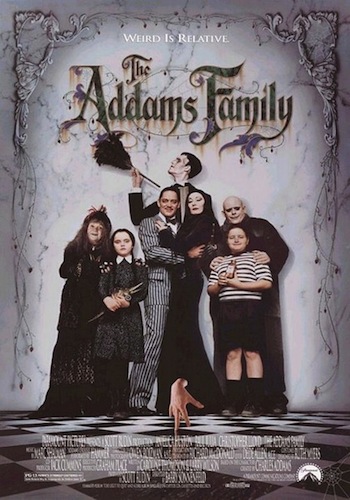 As a teenager, I spent so many late nights at a local pizza shop playing The Addams Family that the owner affectionately called me “Pugsley,” after the Addams’ son. The Pat Lawlor-designed machine is more than a personal favorite; it shook the pinball world during the early 1990s, at once symbolizing the industry’s resurgence, and perhaps, its last gasp of life.
As a teenager, I spent so many late nights at a local pizza shop playing The Addams Family that the owner affectionately called me “Pugsley,” after the Addams’ son. The Pat Lawlor-designed machine is more than a personal favorite; it shook the pinball world during the early 1990s, at once symbolizing the industry’s resurgence, and perhaps, its last gasp of life.
Although pinball traces its roots back to the 18th—century parlor game bagatelle, modern coin-operated pinball originated in the United States during the 1930s with such games as David Gottlieb’s Baffle Ball (1931) and Raymond Moloney’s Ballyhoo (1932). Pinball blossomed during the post-World War II years, following the release of D. Gottlieb & Co.’s Humpty Dumpty (1947), the first machine to use flippers. During the 1960s and 1970s pinball makers produced improved machines featuring multiplayer settings, drop targets, and better bumpers. By the late 1970s, the industry’s transition from electromechanical to “solid state” or electronic machines breathed new life into pinball. Yet the industry declined during the 1980s as players fed most of their quarters into new video arcade games and manufacturers poured far more of their resources into the next Pac-Man (1980) rather than the next pinball.
By the 1990s, many consumers shifted their attention to home video and computer games, but The Addams Family entered a still strong pinball market primed by such novel machines as Lawlor’s Earthshaker (1989) and Funhouse (1990). Based on the 1991 film of the same name and its cartoon and television ancestors, The Addams Family owed much of its success to its rich back-story, quirky characters and settings, and Lawlor’s innovative designs. A player explored the Addams mansion by lighting windows that unlocked game modes such as “The Mamushka,” which added 250,000 points for every switch he hit. The Addams Family also housed the first computer controlled flipper in the history of pinball. During certain moments in the game, the machine entered the “Thing Flips” mode, allowing the computer to control the top left flipper to shoot the ball and recalibrate its accuracy after missed shots. The game also boasted recorded character dialogue from Gomez (Raul Julia) and Morticia (Anjelica Huston), a mechanical “Thing” hand, and a series of magnets under the playfield known as “The Power.”
Such features endowed The Addams Family with unmatched personality and unpredictability. The game details also made The Addams Family so popular with players that Williams produced more than 20,000 machines, making it one of the best-selling pinball machines ever. Though by the mid-1990s arcades disappeared from local malls, and nearly all pinball manufacturers folded, The Addams Family revitalized the industry for a short while.
Today, Stern Pinball and a few independent upstarts manufacture the only new commercial-quality pinball machines in the world. The Addams Family remains one of the most sought after pinball machines and an artifact of the last great era of pinball. We’re proud to have it displayed at the museum, and I remain determined to someday beat the high score set on The Addams Family in eGameRevolution—more than 360,000,000 the last time I played.
 Hours 10 a.m.–5 p.m. | Fri. & Sat. till 8 p.m.
Hours 10 a.m.–5 p.m. | Fri. & Sat. till 8 p.m.